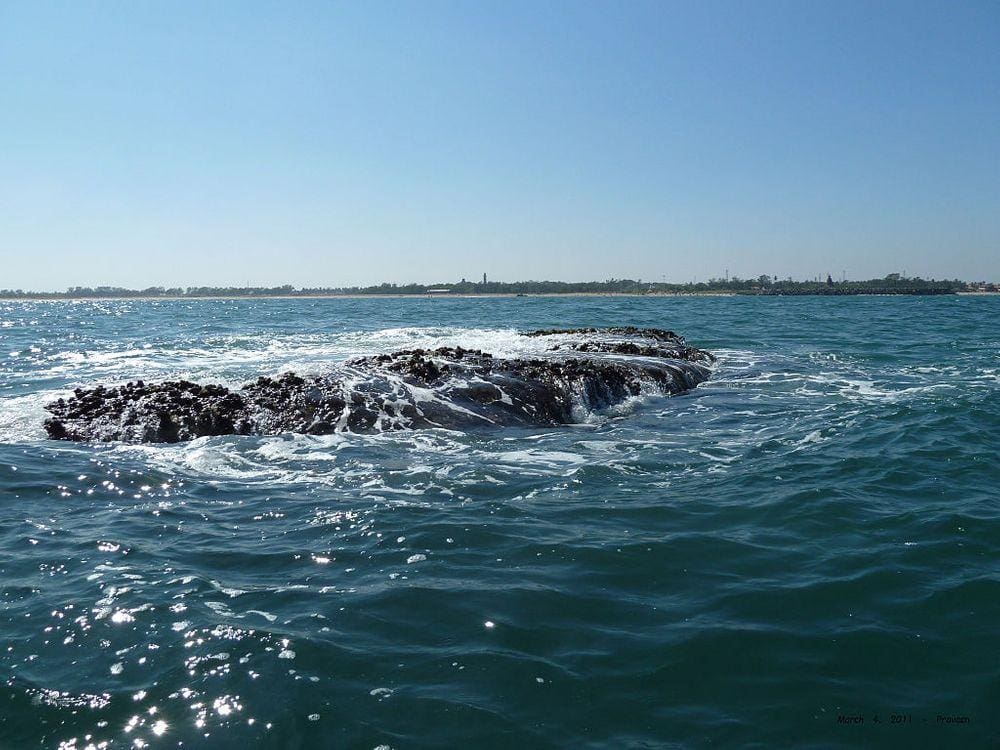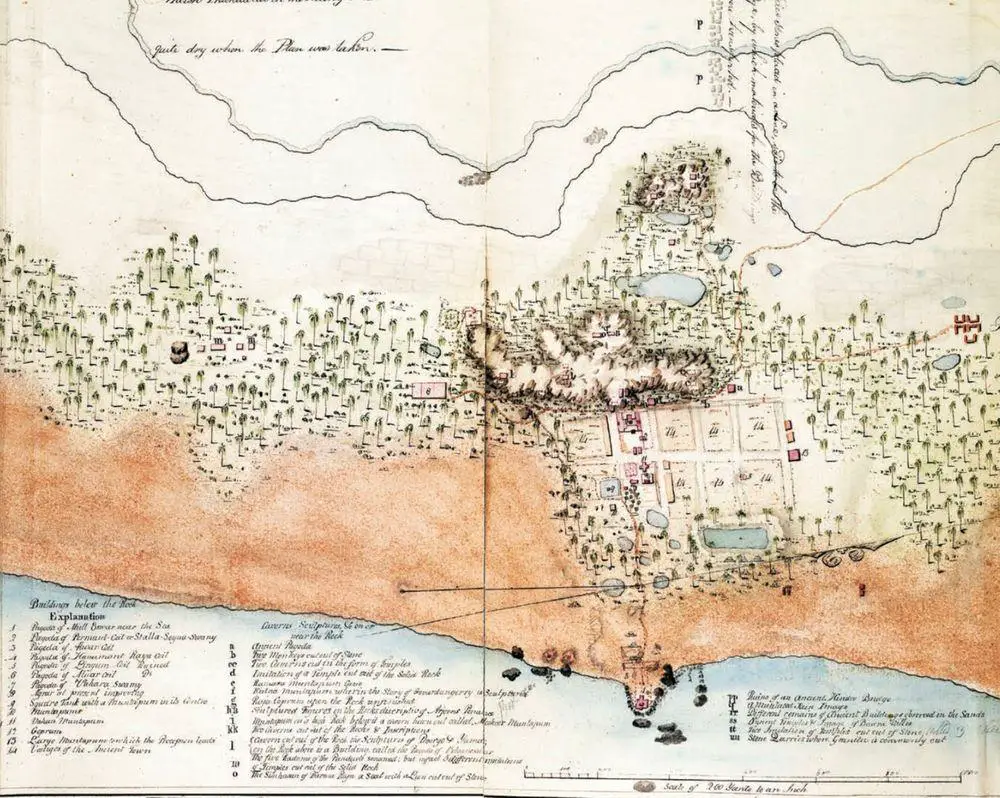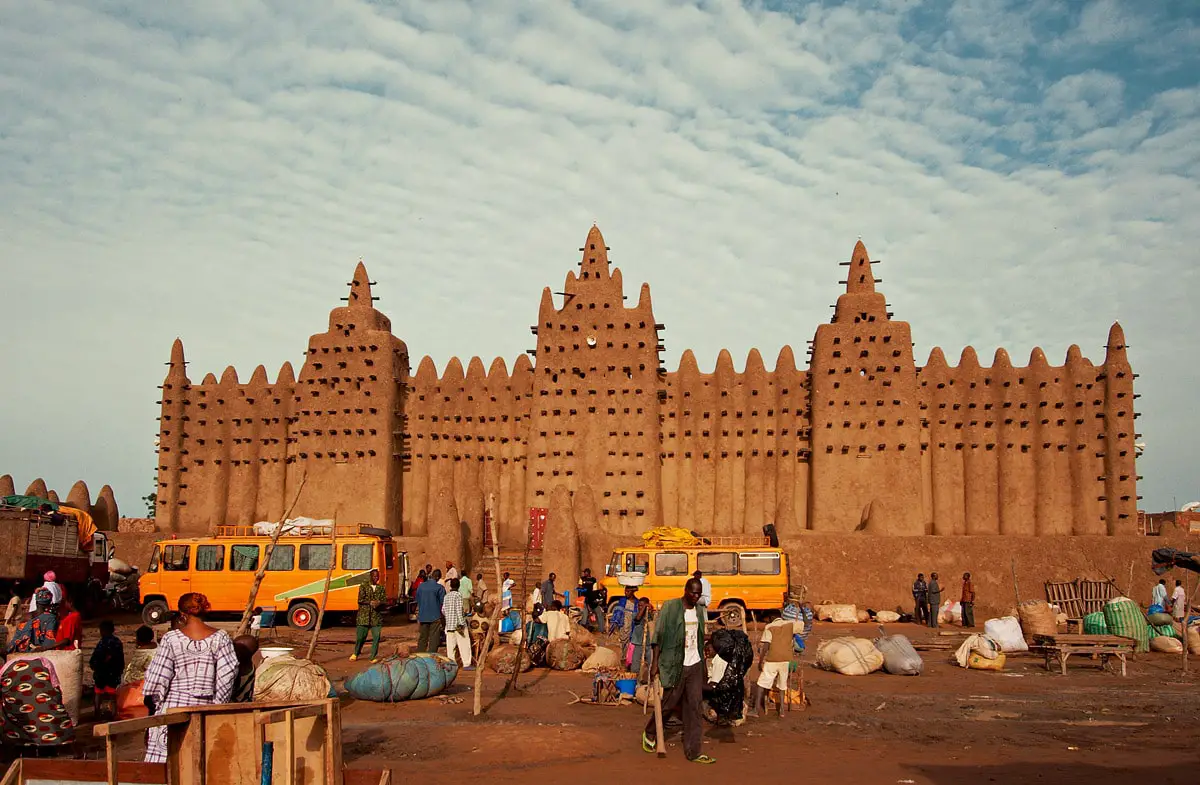World 🢖 Asia 🢖 India 🢖 Tamil Nadu
Hindu shrines 🢔 Religious architecture 🢔 Archaeological wonders 🢔 Categories of wonders
Wonder
Seven Pagodas of Mahabalipuram

 In short
In short
More than one thousand years ago, when the ships approached the splendid port of Mahabalipuram, a great view opened – there were Seven Pagodas – seven temples right at the sea. Now only one of these temples remain – others are below the sea.
 34.0%
34.0%
GPS coordinates
Location, address
Time of construction
Religion
UNESCO World Heritage status
Map of the site
If you see this after your page is loaded completely, leafletJS files are missing.
 In detail
In detail
Seven temples
Until the 7th century AD the stone temples in South India were made in a live rock – whole rooms with adornments and columns were cut in a live cliff. Mahabalipuram was not an exception – skilled stonemasons made diverse temples in the granite outcrops and cliffs.
In the 8th century, the architecture and structural engineering in Mahabalipuram (and the whole of South India) changed. Artisans started to build structures from massive blocks of granite. To the amazement of local people and faraway traders, tall towers rose in Mahabalipuram, right at the seaside, most likely, to impress the guests and to serve for navigation.
We do not know who was the first to mention the “Seven Pagodas” of Mahabalipuram: most likely it was one of the European traders who reached the city in medieval times and was amazed by this impressive group of temples.
Six lost temples
Only one of these “pagodas” remains – the magnificent Shore Temple.
What happened with the other six temples? It’s a mystery… almost. According to a local legend, Indra, the god of rain and storms was enraged by the beauty of Mahabalipuram. Indra flooded and submerged most of the city during a terrible storm and only one temple was left standing at the sea.

Local people always have been sure that other temples existed and were lost in the sea. According to William Chambers (4) “…the more aged people… remembered to have seen the tops of several Pagodas far out in the sea; which being covered with copper (probably gilt) were particularly visible at sunrise, as their shining surface used then to reflect the sun’s rays, but that now that effect was no longer produced, as the copper has become encrusted with mold and verdigris.”
Tsunami turns the legend of Seven Pagodas into reality
If local fishermen always knew about ruins under the water near Shore Temple, the scientific community became convinced about this in 2002 – 2004 when researchers found remnants of some structures near the temple.
In December 2004 something more significant happened – the catastrophic Indian Ocean tsunami hit the coast. Before it, the sea receded for some 500 meters and to the surprised visitors opened a long, straight row of large rocks. And then the terrible waves came. After these waves appeared some more wonders of the past – a large sculpture of a lion (7th century AD), half-completed relief of an elephant, and others. Waves removed the silt and opened a heritage that was hidden from our eyes for centuries.
Five submerged structures
After the tsunami Archaeological Survey of India and the Indian Navy started more thorough research in the sea at Mahabalipuram. They discovered remnants of numerous buildings, walls, platforms, broken pillars, and other details. Style of carving and also some coins gave a hint that these structures, most likely, were built during the Pallava era (3rd – 9th century AD). Sonography showed that there are clusters of rectangular structures – possible fundaments of houses – on the sea ground.
In total there were found five interesting locations. Thus, some 700 m east from Shore Temple is a structure that sometimes, at low tide, appears above the water. Its base is at the depth of some 6 m. The structure is some 75 by 35 m large and consists of a single, massive platform with traces of several smaller buildings on it. Enormous, approximately 2x1x1.5 meters large blocks of granite were used.
Possible explanations
There are some more ancient port cities in this part of India which partly of fully perished in the sea. One such city was Poompuhar – now the remnants of this city are under sea level. Some more are Vanagiri, Chinnavanagiri, and others. Thus Mahabalipuram is not unique in this.
The state of the structures in the sea near Mahabalipuram shows that temples, most likely, were not disintegrated by coastal erosion. The erosion would disperse the stones and there would not be found whole fundaments and walls.
Another culprit could be a tsunami – such catastrophes have happened here before. But tsunami waves come and then recede, leaving destruction and often: washing out the ground. But they do not cause subsidence of the land.
But there is another catastrophe that may cause land subsidence: earthquake. Could this be the reason why “pagodas” are under sea level now?
References
- J. W. Coombes. The Seven Pagodas. Asian Educational Services, 1999. ISBN: 8120614240.
- Swati Das. Tsunami unveils ‘seven pagodas’. The Times of India, February 25, 2005. Accessed on February 4, 2019.
- Sundaresh and A.S. Gaur. Marine Archaeological Investigations on Tamil Nadu Coast,
India: An Overview. Accessed on March 13, 2019. - William Chambers, J. Goldingham, Benjamin Guy Babington, G.W.Mohan, John Braddock, W.Taylor, Walter Elliot, Charles Cubbins. The Seven Pagodas on the Coromandel Coast. Asian Educational Services, New Delhi, 1984. (first published in 1869)
 Linked articles
Linked articles

Wonders of India
India is the seventh-largest country in the world by area, and, naturally, such a large area contains a huge amount of exciting attractions…
Wondermondo considers that India is the second richest center of architectural heritage in the world after Europe and maybe no single country in the world can match it in this respect.

Buddhist shrines
Buddhism is one of the world religions and at the same time is a spiritual philosophy with diverse traditions, beliefs, and practices. There exists a rich tradition of architecture expressed in Buddhist temples and monasteries.

Religious architecture
Since ancient times human talents and skills have been expressed in religious architecture and arts, and traditions and rituals have evolved around pilgrimage sites. Religious buildings represent a major part of the highest achievements in architecture and crafts.
 Recommended books
Recommended books
Tamil Nadu: The Heart of Dravidian India
The huge temples of Tamil Nadu are justifiably famous. Through history and forty-four original photographs, this book explains how the temples came to be and what their statuary symbolizes. The book also paints a picture of what life was like in the civilizations that built them.
Mahabalipuram (Monumental Legacy)
Built in 700 CE by the famous Pallava king Rajasimha, Mahabalipuram is a unique monument where art form combines with religion and legends. Also known as Mamallapuram, it showcases the best of Tamil art and architecture. The beauty of the monument is further enhanced by its location on the shores of the Bay of Bengal, the latter significantly influencing the creations. Part of the prestigious Monumental Legacy series, this book presents a graphic account of the site and its monuments-mandapas (cave temples), rathas (chariots), open-air bas-reliefs, and structural temples.


